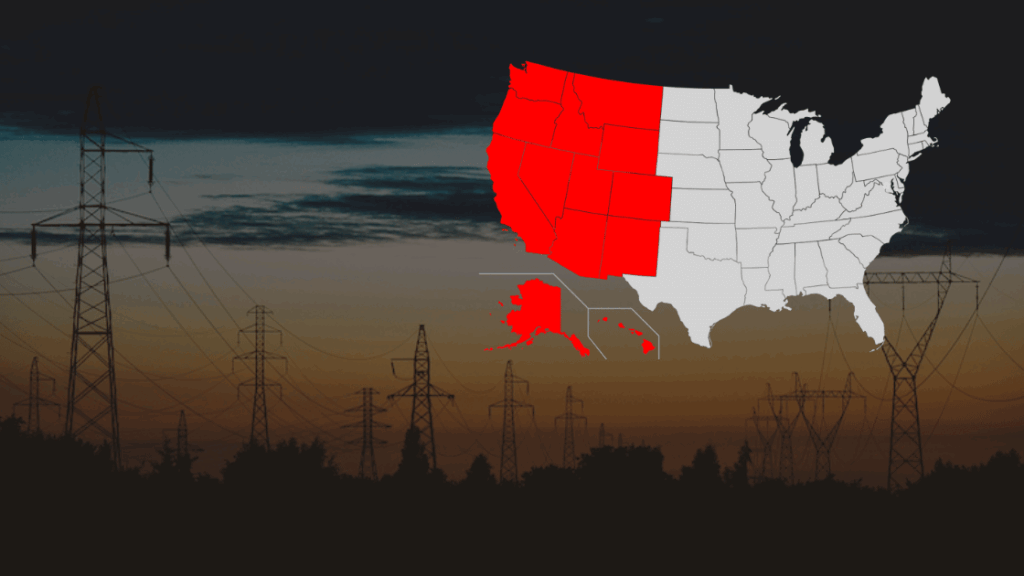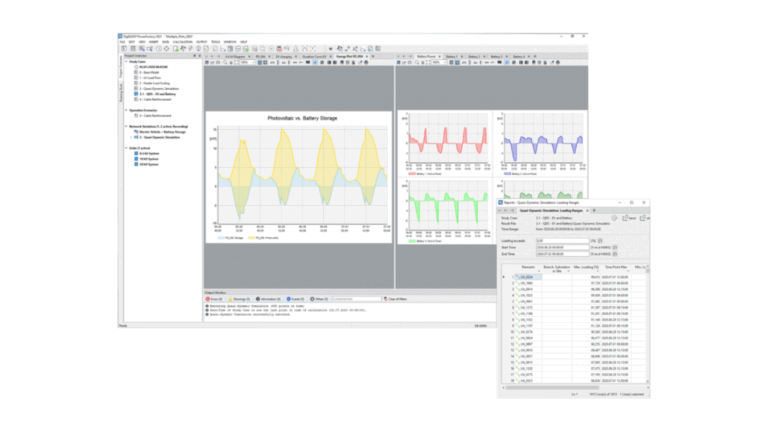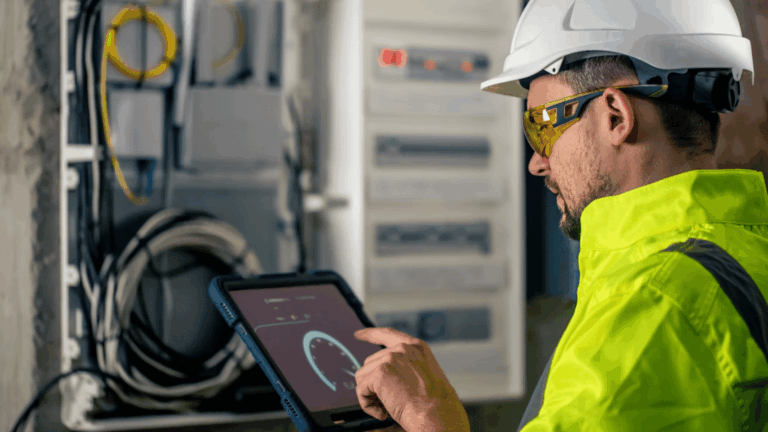As the Western U.S. experiences a rapid evolution in energy demand, a silent but significant transformation is taking shape—driven by the surge in large load interconnections. These aren’t typical residential spikes; they’re high-capacity, industrial-scaBatteryle consumers such as AI-powered data centers, cryptocurrency mining operations, hydrogen production facilities, and electrified transportation hubs. Recognizing the potential impact on grid stability, the Western Electricity Coordinating Council (WECC) commissioned a detailed study to evaluate the reliability risks these large loads pose to the Bulk Power System (BPS).
The Surge of Large Loads: A New Era of Grid Demand
The Western Interconnection is entering a transformative era, with projected power consumption rising by over 20% in the next decade. This surge is driven by the explosive growth of hyperscale data centers, hydrogen electrolyzers, electric vehicle (EV) charging infrastructure, and other high-demand technologies.
In 2023, several major utilities revised their forecasts significantly for 2028:
- Puget Sound Energy raised peak demand expectations by 11%.
- Arizona Public Service added nearly 1 gigawatt (GW) to its projections.
- Portland General Electric doubled its summer peak forecast.
Recognizing the urgency, the Western Electricity Coordinating Council (WECC) now identifies these large load interconnections as a defining shift in transmission planning.
WECC categorizes large loads into two primary types:
- BPS-Connected Loads
Individual industrial-scale loads—such as AI data centers or hydrogen facilities—directly connected to the Bulk Power System via transmission or sub-transmission lines. - Aggregated Large Loads
Distributed assets—like EV chargers and heat pump networks—that may be connected at the distribution level but collectively exert a major impact on system demand.
What Qualifies as a Large Load in Power System Planning?
In the context of modern grid planning, large loads are defined as power-intensive facilities or aggregated systems that significantly impact the Bulk Power System (BPS). These loads often require direct interconnection at the transmission or sub-transmission level due to their scale and operational behavior.
According to WECC, common examples of large electrical loads include:
➤ Hyperscale data centers (particularly AI-driven and cloud infrastructure facilities)
➤ Cryptocurrency mining farms with high computational demand
➤ Large-scale industrial manufacturing facilities
➤ Hydrogen electrolyzer plants
➤ EV fast-charging networks
➤ Electrified commercial heating and cooling systems
➤ Grow houses and high-energy mining operations
A WECC survey across 10 Western utilities revealed that data centers alone account for 80% of all current large load interconnection requests—representing over 44,000 MW of anticipated demand. This is nearly equal to the combined summer peak demand of those utilities, underscoring the urgent need for robust interconnection frameworks and load modeling standards.
Key Risks to Grid Reliability from Large Load Interconnections
Overloaded Interconnection Queues
Unlike generators, large load interconnection requests are not governed by consistent federal standards. Many applications are speculative, lack technical transparency, and bypass rigorous vetting—resulting in overwhelmed utility planning queues and delayed grid upgrades.
Insufficient Load Modeling
The absence of accurate load models impairs a utility’s ability to simulate real-world conditions. This limits effective analysis of frequency response, voltage control, harmonic impacts, and dynamic system stability—all essential for safe grid integration.
Infrastructure Development Lag
Data centers and similar large loads can come online in under two years, while transmission infrastructure upgrades often take 5–10 years. This mismatch in development timelines creates a significant planning and reliability gap.
Operational Variability and Instability
AI-driven data centers and similar facilities often exhibit rapid and unpredictable ramp rates—reaching up to 150% of rated load in seconds. Such volatility poses a direct threat to grid stability, particularly under tight frequency and voltage margins.
Cybersecurity Threats
Many large loads operate remotely or across multiple jurisdictions. This increases the cybersecurity exposure of the grid, introducing potential access points for malicious actors and reducing situational awareness for system operators.
Inadequate Ride-Through Capability
Large loads frequently disconnect during minor voltage disturbances, undermining grid resilience. A notable event in Northern Virginia (2024) saw over 1,500 MW of data center load drop during a routine fault—highlighting the urgent need for ride-through standards and dynamic response planning.

Gaps in Planning, Modeling, and Regulation
Modeling Deficiencies
Many utilities lack access to detailed, real-world data from large load owners, making it difficult to develop accurate system impact simulations. Traditional static load models often overlook critical behaviors like rapid ramping, voltage flicker, and harmonic distortion. Advanced EMT (Electromagnetic Transient) modeling—essential for assessing hyperscale data centers and other dynamic loads—is still not widely adopted across the industry.
Planning Constraints
The pace at which large loads are being deployed significantly outstrips existing infrastructure development timelines. While co-location of generation and load (e.g., pairing data centers with nuclear or renewable assets) is an emerging solution, clear regulatory guidance on such configurations is lacking, leaving developers and planners in uncertainty.
Regulatory Gaps
Unlike generators, most large load facilities are not subject to NERC registration or national interconnection standards. The absence of enforceable performance benchmarks, such as ride-through requirements or voltage control criteria, creates a blind spot in system reliability. As a result, utilities are left to manage these complex risks without sufficient regulatory support or technical frameworks.
Lessons from the Past: What IBR Integration Can Teach Us
The surge in large load interconnections mirrors the earlier challenges faced during inverter-based resource (IBR) integration. That era was marked by unexpected technical disturbances, extensive industry-wide investigations, and delayed regulatory responses. Just like IBRs, large loads present complex dynamics that—if not addressed early—could strain grid reliability. The report strongly recommends proactive planning, standardized modeling, and cross-sector collaboration to avoid repeating past mistakes.

Strategic Recommendations for Grid Stakeholders
Standardize Load Interconnection Procedures
Develop clear and enforceable interconnection protocols that include technical study requirements, data sharing expectations, and system impact modeling for large load facilities.
Establish Load Performance Standards
Define mandatory performance benchmarks—such as voltage and frequency ride-through capabilities and dynamic response behaviors—to ensure stability during disturbances.
Enhance Utility Coordination
Improve collaboration among distribution operators, transmission planners, and system operators to streamline planning and avoid fragmented interconnection processes.
Invest in Advanced Load Modeling Tools
Deploy specialized modeling frameworks for complex loads like hyperscale data centers, EV fast-charging stations, and hydrogen electrolyzers to ensure accurate power system simulations.
Facilitate Cross-Sector Collaboration
Create working groups that include utilities, regulators, developers, and technology providers to align infrastructure planning with real-world energy demands.
Implement Robust Cybersecurity Protocols
Mandate cybersecurity best practices for all large load interconnections—particularly for facilities operated remotely or across international boundaries—to safeguard grid integrity.
Frequently Asked Questions About Large Load Interconnections
1. What is a “large load” in power systems?
Large loads are major energy consumers—such as data centers or aggregated EV chargers—that significantly impact the Bulk Power System (BPS) either individually or collectively.
2. Why is WECC concerned about large load interconnections?
Because they introduce grid reliability risks, including load volatility, infrastructure stress, and potential cybersecurity vulnerabilities.
3. What is driving rapid demand growth in the Western Interconnection?
Key drivers include AI-powered data centers, hydrogen electrolyzers, crypto mining, and electrified transportation systems.
4. How do large loads differ from traditional industrial facilities?
They scale faster, run continuously, and often ramp power usage unpredictably—posing unique planning and operational challenges.
5. Why are utility interconnection queues overwhelmed?
Speculative and loosely defined large load requests lack consistent technical detail, making it hard for utilities to assess and process them effectively.
6. Are there federal standards for large load interconnections?
No—unlike generators, large load facilities are not uniformly regulated by FERC, creating a patchwork of utility-led processes.
7. What happens if large loads are not modeled accurately?
Inadequate models can lead to unreliable system simulations, missed contingency events, and overall instability on the grid.
8. How quickly are hyperscale data centers being developed?
Often within 12–24 months—significantly faster than transmission infrastructure upgrades, which can take 5–10 years.
9. What defines a hyperscale data center?
It’s a massive computing facility designed for scalability and high-volume workloads, typically driven by AI, cloud services, or high-frequency data tasks.
10. Can data centers disrupt power quality?
Yes. Without proper mitigation, they can cause voltage flicker, harmonic distortion, and sudden load spikes or sags.
11. What are voltage and frequency ride-through requirements?
These standards ensure that large loads remain connected during minor grid disturbances to maintain system stability.
12. Are AI workloads more volatile than traditional computing?
Yes—they exhibit sharp, unpredictable ramping due to intensive GPU computation cycles and parallel processing.
13. What happened in Northern Virginia in 2024?
A fault event led to the sudden disconnection of 1,500 MW of data center load, highlighting the danger of poor ride-through performance.
14. Can large load facilities be price-sensitive?
Absolutely—operations like crypto mining and hydrogen production often shift based on electricity market pricing.
15. Are cybersecurity threats increasing with large load growth?
Yes. Remote-controlled and internationally managed sites introduce new cyberattack vectors into the grid.
16. What modeling tools are lacking today?
The grid needs improved EMT (Electromagnetic Transients) and phasor-based modeling tools for dynamic load behavior analysis.
17. What is the “co-location” trend?
It involves pairing large loads—like data centers—with on-site power generation (e.g., nuclear, wind, or solar) to reduce grid dependency.
18. How does fast load growth impact power system planning?
It requires updated base case scenarios, enhanced dynamic studies, and integration of large load behavior into regional models.
19. Can large loads support grid reliability?
Yes—if properly managed, they can provide grid services like frequency response, demand flexibility, and inertia support.
20. What role does BESS play in large load projects?
Battery Energy Storage Systems provide backup power, mitigate voltage dips, and improve ride-through and grid response times.
21. What are the risks of delayed load modeling improvements?
Utilities may struggle to detect system vulnerabilities or predict disturbance impacts, leading to reliability failures.
22. Is there resistance from utilities regarding speculative load projects?
Yes. Many utilities advocate for stronger queue entry standards to reduce planning burden and improve project viability.
23. What are aggregated loads?
These are distributed devices (like EV chargers and heat pumps) that, in aggregate, can significantly affect system performance.
24. Are heat pumps a grid reliability concern?
They can be—especially when they create new seasonal peak demands that strain grid capacity during cold mornings or hot afternoons.
25. How can regulators improve large load integration?
By establishing enforceable technical standards, performance requirements, and interconnection guidelines tailored to modern demand patterns.
Keentel’s Takeaway
At Keentel Engineering, we understand that the modern power grid is at a critical inflection point. As large load interconnections—such as hyperscale data centers, EV infrastructure, and hydrogen facilities—reshape energy demand, utilities and developers need forward-thinking solutions. Our team delivers advanced load modeling, system impact studies, and bulk power system (BPS) interconnection services to help stakeholders plan with confidence. We ensure your projects meet technical, regulatory, and reliability requirements—without sacrificing innovation or performance.
Need help with large load interconnection planning? Reach out at www.keentelengineering.com
Email: contact@keentelengineering.com | Call: 813-389-7871






